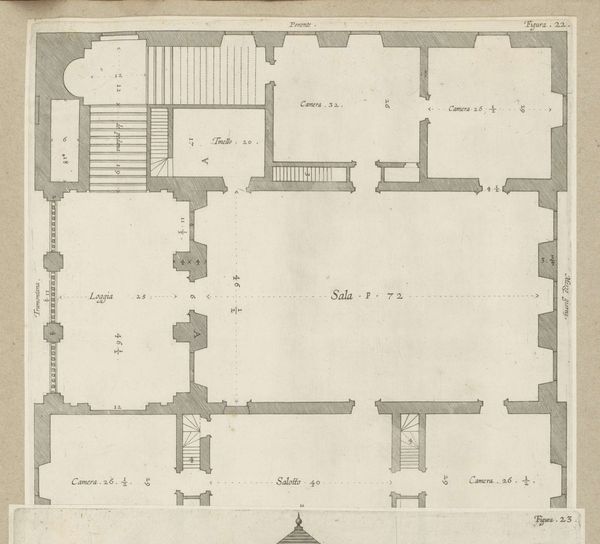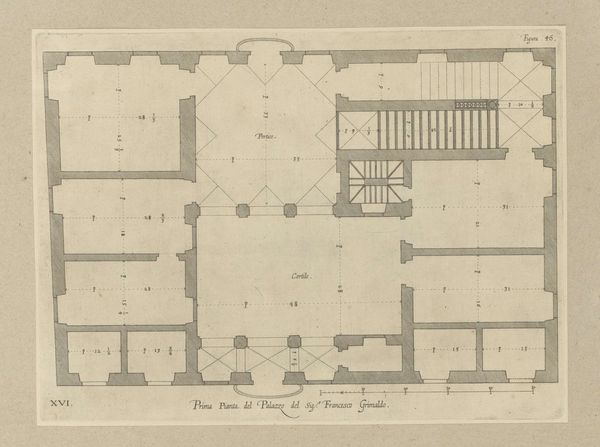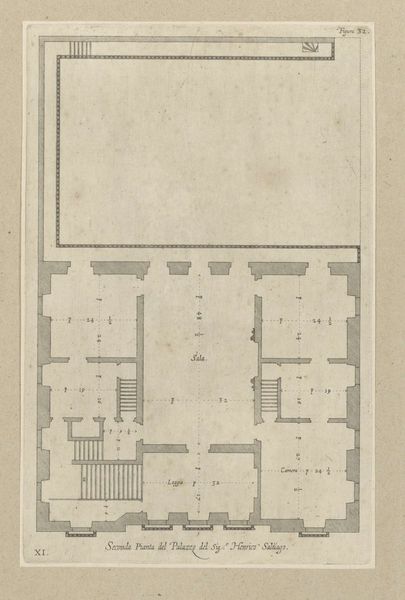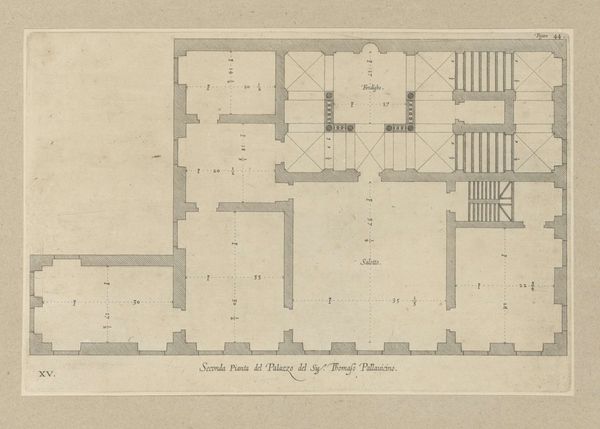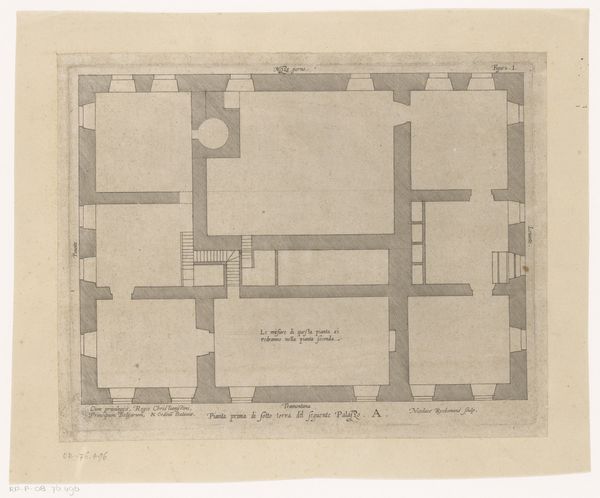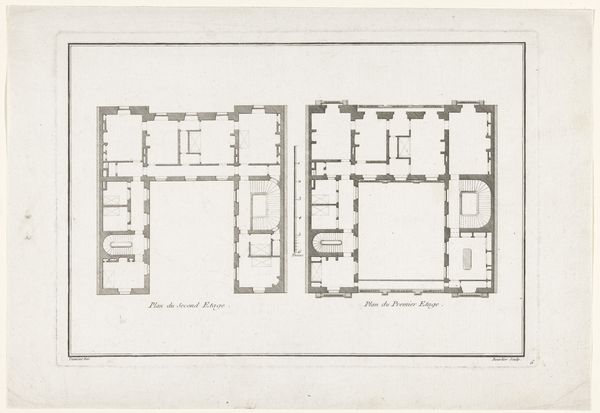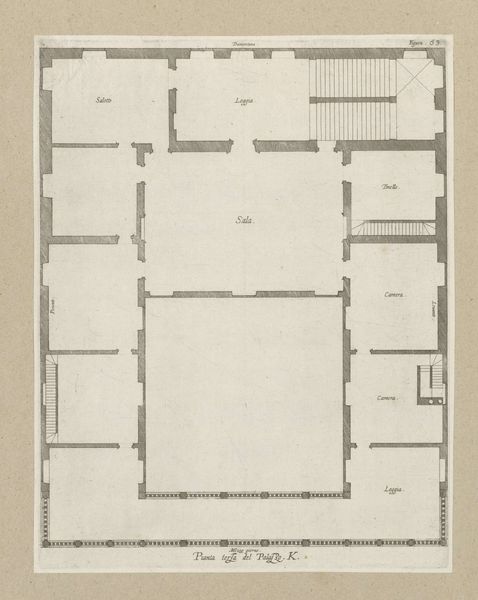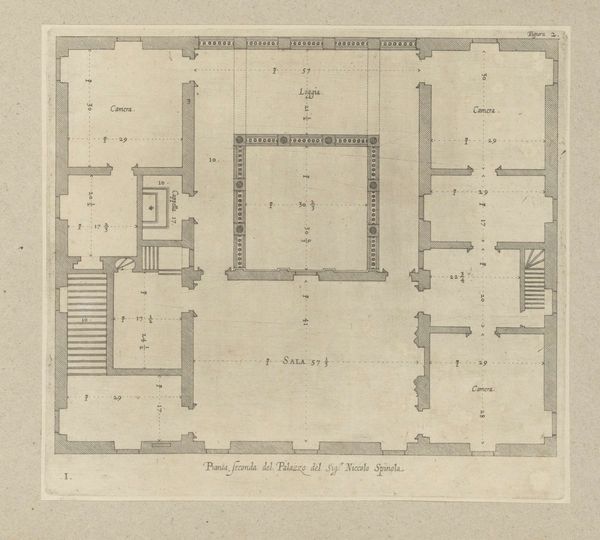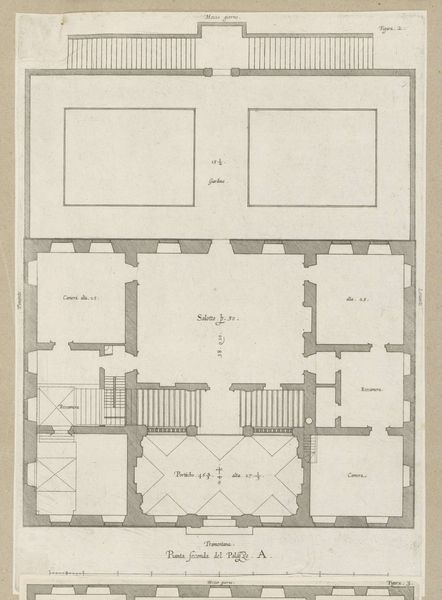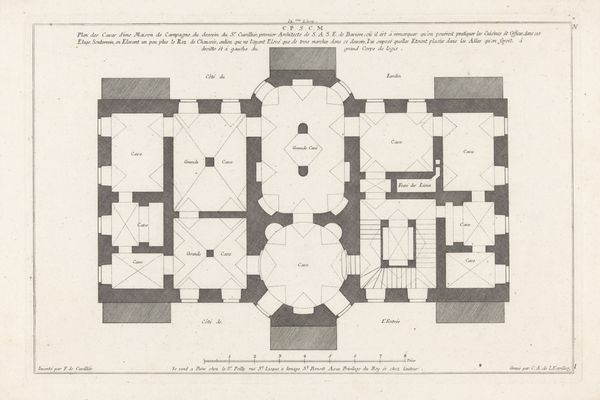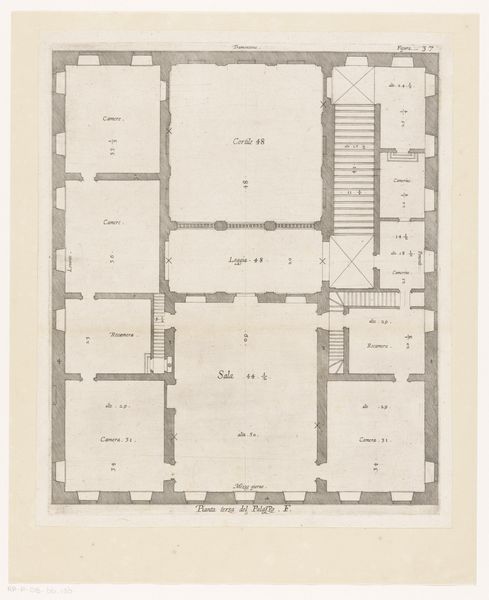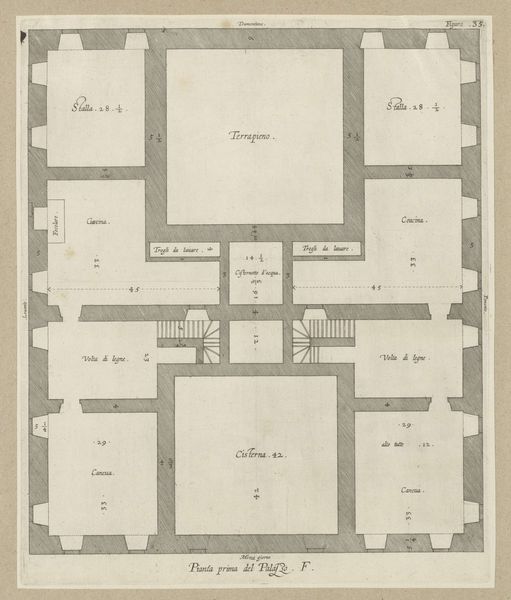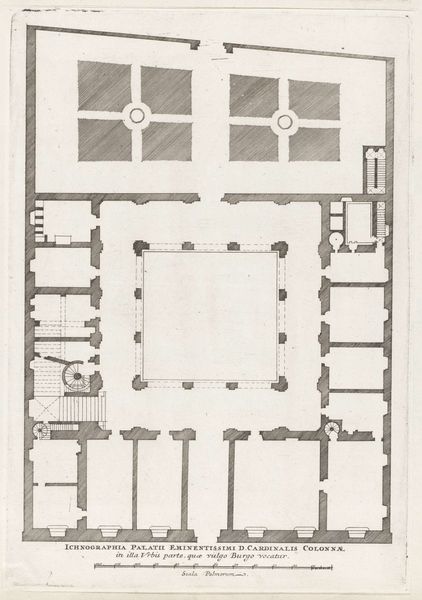
Plattegrond van een van de palazzi aan het Piazza del Campidoglio te Rome 1629 - 1679
0:00
0:00
drawing, print, intaglio, engraving, architecture
#
drawing
#
baroque
# print
#
intaglio
#
geometric
#
line
#
cityscape
#
engraving
#
architecture
Dimensions: height 199 mm, width 280 mm
Copyright: Rijks Museum: Open Domain
Editor: This is "Plattegrond van een van de palazzi aan het Piazza del Campidoglio te Rome" or "Floor plan of one of the palazzi on the Piazza del Campidoglio in Rome," by Jean Marot. It’s from between 1629 and 1679 and done in engraving. The drawing has very crisp lines with a good sense of symmetry. How do you approach a piece like this, purely from its visual elements? Curator: The emphasis is immediately on the geometric shapes dominating the composition. Note the interplay between orthogonal lines and carefully placed circles, squares, and octagons. The artist’s calculated precision in rendering architectural space evokes a strong sense of order. Observe how line weights modulate, subtly creating depth. Editor: So you are suggesting the arrangement and the relationship of those forms, the lines, are most important? Curator: Precisely. Focus on the rhythm and balance the architectural plan achieves. Do you see how the repeated use of parallel lines, especially in depicting staircases, contributes to a sense of dynamism despite the static nature of the subject? The geometric regularity serves to give structure to architectural possibility. The eye travels in a deliberately choreographed manner through the architectural skeleton itself. Editor: It's interesting how a flat floor plan can convey that feeling of depth and space, just through lines and shapes. I now see how much information you can glean just from analysing the composition and technique itself. Curator: Exactly! These intrinsic elements contain layers of artistic intentionality, wouldn’t you agree? Editor: Absolutely, I see how rewarding it is to concentrate on just the lines and composition, as that approach certainly reveals much more than I initially realised.
Comments
No comments
Be the first to comment and join the conversation on the ultimate creative platform.
